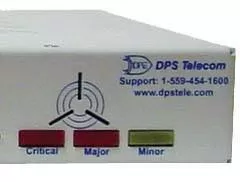Check out our White Paper Series!
A complete library of helpful advice and survival guides for every aspect of system monitoring and control.
1-800-693-0351
Have a specific question? Ask our team of expert engineers and get a specific answer!
Sign up for the next DPS Factory Training!

Whether you're new to our equipment or you've used it for years, DPS factory training is the best way to get more from your monitoring.
Reserve Your Seat Today
Our client base has always said the NetGuardian 832A is an amazing alarm remote, but a few of our clients suggested that if we wanted to make it even better, we should consider adding a few more serial ports. We did that and then some (nine more serial ports, to be exact) to create the NetGuardian-16S, the most powerful NetGuardian ever.
The NetGuardian-16S provides users with a total of 16 reach-through serial ports they can use to remotely access serial devices via Telnet over LAN.
What's even better is that the NetGuardian-16S's 16 serial ports can now run up to 110K. This means that you can use your NetGuardian-16S to get data faster, as well as access a larger variety of devices (some modern devices can only run at 110K).

This still leaves one additional port that is dedicated to support additional NetGuardian DX Expansion Units, which means you don't have to sacrifice a Telnet port to expand your alarm capacity.
The NetGuardian-16S serial ports are RJ45 connectors using the YOST standard, so it's now even easier to connect straight-through or swapover cables.
We've also added a secondary NIC, which permits the NetGuardian-16S to connect to two separate networks.
In this era of increased security measures and diverse network topologies, an increasing number of deployments require a second network interface.
The applications for the NetGuardian-16S's dual NIC capability include:

It's important to note, from a security and segmentation point of view, that both LANs can access the NetGuardian-16S, but they can't access each other.
SNMP Traps, FTP, Web browsing and Telnet can be accessed from either NIC. Each LAN has its own status LEDs to facilitate setup and operation.

The multifunction LCD display (typically used to display descriptions of failed alarms) is supplemented by three large LEDs that provide an immediate, highly visible, indication of alarm severity. In other words, we've integrated functionality very similar to our Building Status Unit directly into the front panel of the NetGuardian-16S.
The integrated Building Status Unit provides on-site personnel with "at a glance" feedback of any Critical, Major or Minor alarms standing in the system.
The new Alarm Grouping feature on the NetGuardian 4.0 firmware (see "Turbocharge Your NetGuardian with SNMP v2") can be used to assign each individual alarm point its own severity level.
The NetGuardian platform already had a wide range of notification and alarm visibility methods: alarm reporting to SNMP managers and T/Mon NOC or T/Mon SLIM; Web interface; email; alphanumeric pagers; numeric pagers; and raw text output.
Not being satisfied with the status quo, we added Voice Call Out capabilities to the NetGuardian-16S.
The NetGuardian-16S can dial out to user's regular telephones and speak alarm messages in a synthesized voice. You can also call in to the NetGuardian-16S from any touch-tone phone and get a spoken alarm status report.
Voice Call Out is the ideal way to get remote-site alarm status wherever you are - your home, your desk, or your cell phone.
Of course, hearing messages is only half the job. Using the DTMF receiver functionality, you can interact with the NetGuardian-16S without a computer. In short, if you have access to a phone (and a security password), you have visibility into your monitoring.
The NetGuardian firmware was also enhanced to support SNMP v2, though the NetGuardian-16S can still be configured to use SNMP v1. The NetGuardian-16S will work well in your network, no matter what your Monitoring framework.
The NetGuardian SNMP v2 implementation also supports the INFORM command, so SNMP traps can be positively acknowledged from the master. IF the master doesn't acknowledge receipt of the INFORM, the NetGuardian-16S will resend the alarm until the master acknowledges. This is great because it reduces the likelihood of missing an alarm, since the SNMP protocol does not guarantee deliverability.
The NetGuardian-16S also supports a second global SNMP manager, so it's easier than every to support a more secure redundant master architecture.
With all the tings we added to the NetGuardian-16S, there were a few things we kept exactly as is: free lifetime firmware upgrades, two-year hardware warranty, and of course, our No-Risk Money-Back Guarantee.
NetGuardian-16S: Powerful Remote Site Monitoring Made Easy
The NEBS-complaint NetGuardian-16S is a powerful tool for remote site management. Monitor alarms directly from the Web without a master ... access remote site equipment through a 16-port terminal server ... get email notifications of every alarm ... learn everything the NetGuardian-16S can do for you.